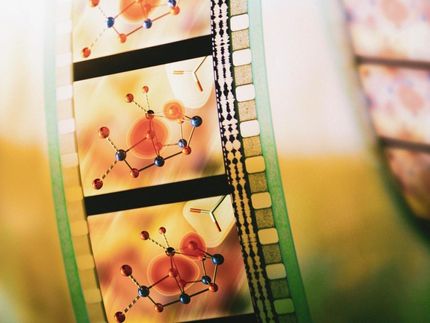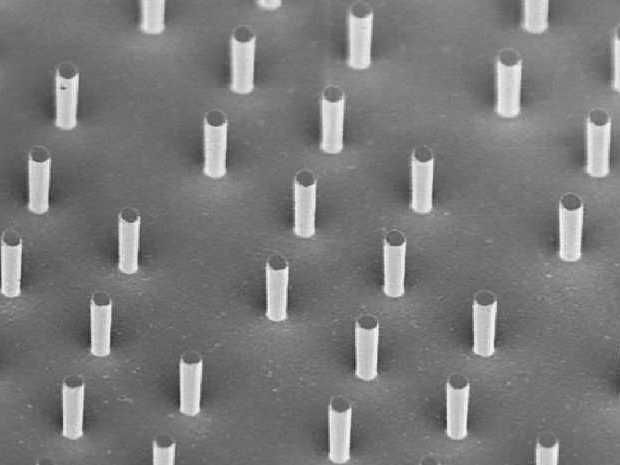Search for Advanced Materials Aided by Discovery of Hidden Symmetries in Nature
A new way of understanding the structure of proteins, polymers, minerals, and engineered materials was published in Nature Materials. The discovery by two Penn State University researchers is a new type of symmetry in the structure of materials, which the researchers say greatly expands the possibilities for discovering or designing materials with desired properties. The research is expected to have broad relevance in many development efforts involving physical, chemical, biological, or engineering disciplines including, for example, the search for advanced ferroelectric ferromagnet materials for next-generation ultrasound devices and computers.
Before the publication of this paper, scientists and engineers had five different types of symmetries to use as tools for understanding the structures of materials whose building blocks are arranged in fairly regular patterns. Four types of symmetries had been known for thousands of years - called rotation, inversion, rotation inversion, and translation - and a fifth type - called time reversal - have been discovered about 60 years ago. Now, Gopalan and Litvin have added a new, sixth, type, called rotation reversal. As a result, the number of known ways in which the components of such crystalline materials can be combined in symmetrical ways has multiplied from no more than 1,651 before to more than 17,800 now. "We mathematically combined the new rotation-reversal symmetry with the previous five symmetries and now we know that symmetrical groups can form in crystalline materials in a much larger number of ways," said Daniel B. Litvin, distinguished professor of physics, who coauthored the study with Venkatraman Gopalan, professor of materials science and engineering.
The new rotation-reversal symmetry enriches the mathematical language that researchers use to describe a crystalline material's structure and to predict its properties. "Rotation reversal is an absolutely new approach that is different in that it acts on a static component of the material's structure, not on the whole structure all at once," Litvin said. "It is important to look at symmetries in materials because symmetry dictates all natural laws in our physical universe."
The most simple type of symmetry - rotation symmetry - is obvious, for example, when a square shape is rotated around its center point: the square shows its symmetrical character by looking exactly the same at four points during the rotation: at 90 degrees, 180 degrees, 270 degrees, and 360 degrees. Gopalan and Litvin say their new rotation-reversal symmetry is obvious, as well, if you know where to look.
The "eureka moment" of the discovery occurred when Gopalan recognized that the simple concept of reversing the direction of a spiral-shaped structure from clockwise to counterclockwise opens the door to a distinctly new type of symmetry. Just as a square shape has the quality of rotation symmetry even when it is not being rotated, Gopalan realized that a spiral shape has the quality of rotation-reversal symmetry even when it is not being physically forced to rotate in the reverse direction. Their further work with this rotation-reversal concept revealed many more structural symmetries than previously had been recognized in materials containing various types of directionally oriented structures. Many important biological molecules, for example, are said to be either "right handed" or "left handed," including DNA, sugars, and proteins.
"We found that rotation-reversal symmetry also exists in paired structures where the partner components lean toward each other, then away from each other in paired patterns symmetrically throughout a material," Gopalan said. These "tilting octahedral" structures are common in a wide variety of crystalline materials, where all the component structures are tightly interconnected by networks of shared atoms. The researchers say it is possible that components of materials with rotation-reversal symmetry could be engineered to function as on/off switches for a variety of novel applications.
The now-much-larger number of possible symmetry groups also is expected to be useful in identifying materials with unusual combinations of properties. "For example, the goal in developing a ferroelectric ferromagnet is to have a material in which the electrical dipoles and the magnetic moments coexist and are coupled in the same material - that is, a material that allows electrical control of magnetism - which would be very useful to have in computers," Gopalan said. The addition of rotation-reversal symmetry to the materials-science toolbox may help researchers to identify and search for structures in materials that could have strong ferroelectric and ferromagnetic properties.
Gopalan and Litvin said a goal of their continuing research is to describe each of the more than 17,800 different combinations of the six symmetry types to give materials scientists a practical new tool for significantly increasing the efficiency and effectiveness in finding novel materials. The team also plans to conduct laboratory experiments that make use of their theoretical work on rotation-reversal symmetry. "We have done some predictions, we will test those predictions experimentally," Litvin said. "We are in the very early stages of implementing the results we have described in our new theory paper." Gopalan said, for example, that he has predicted new forms for optical properties in the commonplace quartz crystals that are used widely in watches and electronic equipment, and that his group now is testing these predictions experimentally.






























































